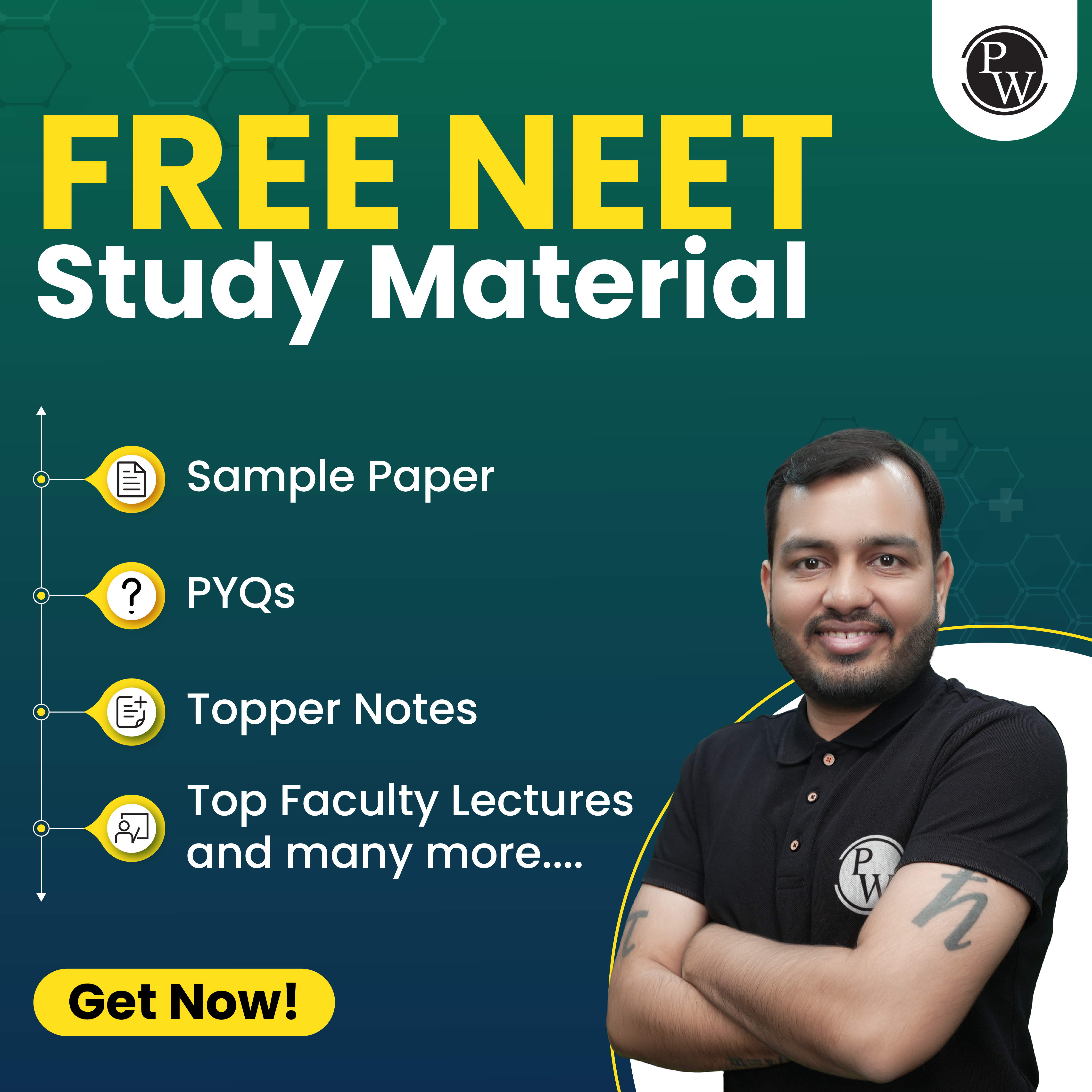
Biological Classification Important Questions for NEET : Biological classification is an essential topic in the NEET syllabus . It involves the systematic categorization of living organisms into groups based on their similarities and differences. This topic is fundamental for understanding the diversity of life and is highly significant for NEET 2025 preparation . This article provides an in-depth overview of the topic and important practice questions to help students excel.
Biological Classification Important Questions for NEET, Overview
Biological classification is the scientific process of arranging living organisms into hierarchical groups based on their evolutionary relationships, characteristics, and similarities. It helps scientists study organisms systematically and provides a universal framework for identifying and categorizing life forms. The classification system, introduced by Carl Linnaeus, has been further refined over time to include multiple levels.
Also Check:
What is Biological Classification?
Biological classification is the process of organizing living organisms into groups and subgroups based on their shared features and evolutionary ancestry. It serves as the foundation for studying biodiversity and understanding relationships among different species.

Practice Questions for Biological Classification for NEET
Addressing these questions will assist students in consolidating their understanding of fundamental concepts, thereby facilitating more effective preparation for the NEET 2025 examination.
Q1. Class sporozoa of phylum protozoa is characterized by:
- flagella.
- cilia.
- pseudopodia.
- infectious spores-like stage.
Q2. Which of the following is incorrect for Nostoc?
- Heterocystous cyanobacteria
- Presence of mucilagenous sheath
- Presence of flagella
- Fixes atmospheric nitrogen
Q3. The algal component of lichen is known as A and fungal component as B. Identify A and B, respectively.
- A-mycobiont, B-phycobiont
- A-mycobiont, B-symbiont
- A-phycobiont, B-mycobiont
- A-symbiont, B-phycobiont
Q4. Cr–Jacob disease (CJD) in humans is caused by:
- viruses.
- prions.
- viroids.
- protozoans.
Q5. Which of the following pair is not correctly matched?
- Golden algae – Chrysophytes
- Amoeba – Protozoan
- Claviceps – Ascomycetes
- Albugo – Deuteromycetes
Q6. Match List-I with List-II.
| List-I | List-II |
|---|---|
| (A) Amoeboid protozoan | (I) Plasmodium |
| (B) Ciliated protozoan | (II) Trypanosoma |
| (C) Sporozoan | (III) Entamoeba |
| (D) Flagellated protozoan | (IV) Paramoecium |
- A-III, B-I, C-IV, D-II
- A-IV, B-I, C-II, D-III
- A-III, B-IV, C-I, D-II
- A-IV, B-III, C-I, D-II
Q7. How many statements are correct for the Kingdom-Monera?
- Includes unicellular, colonial and filamentous prokaryotes.
- Bacteria reproduce only by fission.
- Nutritionally monerans are only photoautotrophs and saprophytes.
- Some of the monerans can cause disease like Cholera, typhoid, tetanus, etc.
- All are correct.
- I, II and III are correct.
- Only I is correct.
- I and IV are correct.
Q8. Match List-I with List-II.
| List-I | List-II |
|---|---|
| (A) Phycomycetes | (I) Mycelium is branched and septate |
| (B) Ascomycetes | (II) Mycelium is aseptate and coenocytic |
| (C) Entamoeba | (III) Saprophytic protist |
| (D) Slime mould | (IV) Parasitic protozoan |
- A-II, B-I, C-III, D-IV
- A-I, B-II, C-III, D-IV
- A-II, B-I, C-IV, D-III
- A-I, B-II, C-IV, D-III
Q9. Choose the correct option for the organism given below:
- Possess gullet
- The food is steered into the gullet
- Aquatic, passively moving organism
- Form infectious spore-like stage
- I and II only
- III and IV only
- II and III only
- I and IV only
Q10. Given below are two statements: Statement I: No virus contains both RNA and DNA. Statement II: A virus is a nucleoprotein and the genetic material is infectious.In the light of the above statements, choose the most appropriate answer:
- Statement I is correct but Statement II is incorrect.
- Statement I is incorrect but Statement II is correct.
- Both Statement I and Statement II are correct.
- Both Statement I and Statement II are incorrect.
Q11. Choose the correct option w.r.t. TMV:
- Capsomeres are arranged in polyhedral form
- Possess non-infectious RNA
- Beijerinek found that they can pass through bacteria-proof filters
- Single stranded RNA is present.
Q12. Find the mismatched pair:
- Prions - Consists of abnormally folded protein
- Viruses - Non-cellular organisms
- Bacteriophages - Viruses that infect plants
- Viroids - Smaller than viruses
Q13. Fusion of protoplasms between two motile or non-motile gametes is called as:
- plasmogamy.
- karyogamy.
- dikaryon.
- dikaryophase.
Q14. Identify A, B, and C in the following diagram of dividing bacteria and select the correct option.
- A - Cell wall, B - Cell membrane, C - Heterocyst
- A - Cell wall, B - Cell membrane, C - DNA
- A - Mucilagenous sheath, B - Cell membrane, C - DNA.
- A - Cell membrane, B - Cell wall, C - DNA
Q15. Choose the odd one out w.r.t. dinoflagellates:
- Mostly freshwater
- Stiff cellulosic plates
- Two different flagella
- Some cause red tides
Q16. The fungi that is known as bread mould is:
- Mucor.
- Rhizopus.
- Albugo.
- Penicillium.
Q17. Pick the correct combination of statements (i-iv) regarding characteristics of some entities:
- Methanogens are archaebacteria that produce methane in marshy areas.
- Nostoc is a filamentous blue-green alga which fixes atmospheric nitrogen.
- Chemosynthetic autotrophic bacteria synthesize cellulose from glucose.
- Mycoplasma lack a cell wall and can survive without oxygen.
- (ii) and (iii) only
- (i), (ii) and (iii) only
- (ii), (iii) and (iv) only
- (i), (ii) and (iv) only
Q18. Protista is similar to Plantae and different from Monera in:
- (1) mode of nutrition.
- (2) level grade of organization.
- (3) nuclear membrane.
- (4) having cell wall.
Q19. Diatom’s shell has deposition of:
- silica.
- lime.
- magnesium carbonate.
- calcium.
Q20. Which of the following is correct?
- Slime moulds are parasites
- Protozoans lack cell wall
- Dinoflagellates are non-motile
- Pellicle is absent in Euglena
Q21. Identify the class of fungi which shows all the following features:
- Mycelium is septate and branched.
- Large number of fungi are decomposers of litter and help in mineral cycling.
- Reproduce only by asexual spores known as conidia.
- Members of this class are Trichoderma and Alternaria.
- Phycomycetes
- Ascomycetes
- Basidiomycetes
- Deuteromycetes
Q22. Given below are two statements: Assertion: In Deuteromycetes, when the sexual forms of these fungi were discovered they were moved into classes they rightly belong to. Reason: Once perfect (sexual) stages of members of Deuteromycetes were discovered they were only moved to phycomycetes.Choose the correct answer:
- (1) A is true but R is false.
- (2) A is false but R is true.
- (3) Both A and R are true and R is the correct explanation of A.
- (4) Both A and R are true but R is not the correct explanation of A.
Q23. Given below are two statements: Assertion: Diatoms formed diatomaceous earth. Reason: Diatoms are the chief producers in the ocean.Choose the correct answer:
- A is true but R is false.
- A is false but R is true.
- Both A and R are true and R is the correct explanation of A.
- Both A and R are true but R is not the correct explanation of A.
Q24. Given below are two statements: Assertion (A): Euglenoid's body is flexible. Reason (R): Instead of a cell wall, Euglenoids have a protein-rich layer called pellicle.Choose the correct answer:
- A is true but R is false.
- A is false but R is true.
- Both A and R are true and R is the correct explanation of A.
- Both A and R are true but R is not the correct explanation of A.
Q25. Read the following statements carefully and choose the incorrect one:
- The recycling of several nutrients in soil like iron, sulfur etc. is done by chemosynthetic autotrophs.
- Lichen is a symbiotic association between phycobiont and mycobiont, which are autotrophic and heterotrophic in nature, respectively.
- Linnaeus used simple morphological features to classify plants into trees, shrubs, and herbs.
- The mode of nutrition of Kingdom Animalia is heterotrophic.
Q26. Match List-I with List-II.
| List-I | List-II |
|---|---|
| A. Plant virus | I. Mad cow diseases |
| B. Sporozoans | II. Potato spindle tuber |
| C. Viroids | III. Malaria |
| D. Prions | IV. Tobacco mosaic disease |
- A-I, B-II, C-III, D-IV
- A-II, B-I, C-IV, D-III
- A-IV, B-III, C-II, D-I
- A-II, B-III, C-IV, D-I
Q27. Match List-I with List-II.
| List-I | List-II |
|---|---|
| A. Edible delicacies | I. Penicillium |
| B. Experimental genetics | II. Neurospora |
| C. Source of antibiotics | III. Puccinia, Ustilago |
| D. Rust and smut disease | IV. Morels and truffles |
- A-IV, B-II, C-III, D-I
- A-III, B-I, C-II, D-IV
- A-IV, B-II, C-I, D-III
- A-IV, B-III, C-II, D-I
Q28. Given below are two statements: Statement I: Dikaryophase occurs in some fungi like Ascomycetes and Basidiomycetes. Statement II: In Ascomycetes and Basidiomycetes, an intervening dikaryotic stage (n + n, i.e., two nuclei per cell) occurs after plasmogamy.Choose the correct answer:
- Statement I is true but Statement II is false
- Statement I is false but Statement II is true
- Both Statement I and Statement II are true
- Both Statement I and Statement II are false
Q29. How many of the following organisms given below belong to cyanobacteria: Euglena, Chlorella, Anabaena, Chlamydomonas, Spirogyra, NostocChoose the correct option:
- Six
- Five
- Two
- Three
Q30. Match List-I with List-II.
| List-I | List-II |
|---|---|
| A. Chrysophytes | I. Paramoecium |
| B. Dinoflagellates | II. Euglena |
| C. Euglenoids | III. Gonyaulax |
| D. Protozoans | IV. Diatoms |
- A-I, B-III, C-II, D-IV
- A-II, B-IV, C-III, D-I
- A-IV, B-II, C-II, D-I
- (4) A-IV, B-III, C-II, D-I
Biological Classification Important Questions for NEET PDF
Students preparing for NEET 2025 can benefit from PDFs containing detailed practice questions on biological classification. These resources typically include diagrams and explanations of classification systems, providing a comprehensive understanding of the topic. Focusing on the characteristics of various kingdoms and the differences among classification systems is essential for success.
Download the PDF of Biological Classification Important Questions for NEET
Physics Wallah (PW) offers NEET Online Coaching in India, designed to make quality education accessible to all aspiring medical students.
Biological Classification Important Questions for NEET FAQs
What is meant by biological classification?
What are the 8 classifications in biology?
What are the 7 levels of biological classification?
What is an example of class in biological classification?










